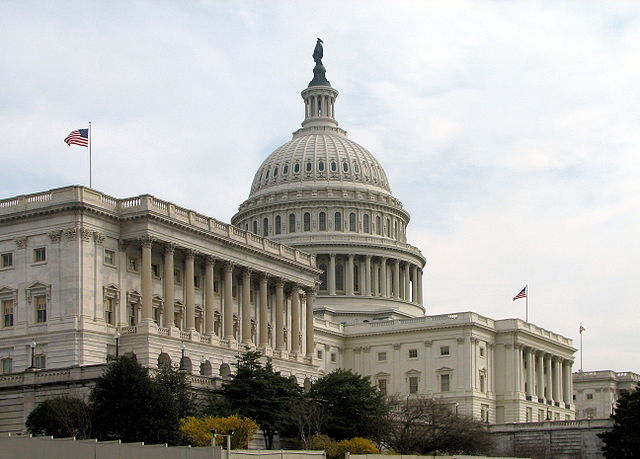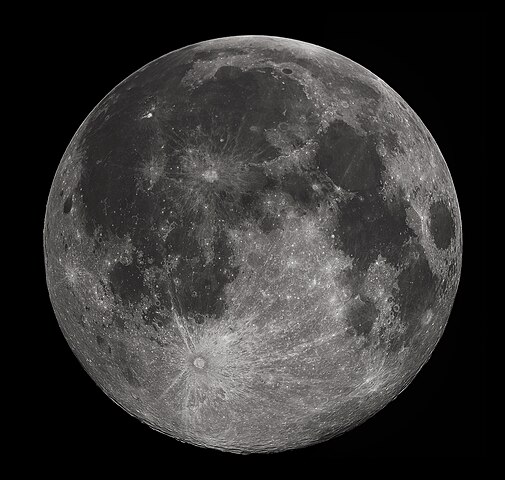Bias can taint scientific research, as conclusions are sensitive to the conscious and unconscious choices scientists make in study design, data collection, analysis, and interpretation. A naive, utopian vision of science would have its practitioners completely impartial, unbiased and objective. Scientists would rely solely on the evidence to construct their conclusions about the world, without an eye towards dogma or financial gain.
Of course, this vision is a far cry from the reality of science, which is ultimately a human, social endeavor. Scientists bring their cultures, ideas, opinions and ideologies to their work. Further, as humans living in the world, the prospect of financial gain or loss weighs on them like anyone else. Society has agreed that scientific research is worth paying for, and has allotted resources to ensure that it is a viable career (sort of). But these resources come with strings attached, and this is how it should be. Scientists should not be an unaccountable priestly class, but must instead enter into a defined social contract to serve a wider social utility for the people paying them to conduct their research and feed themselves. Science funding agencies like NSF, NIH, and the Wellcome Trust must have their mandates, priorities and agendas, and scientists ultimately must cater to them. At the most basic level, funding priorities shape which fields and questions scientists pursue.
More sordidly, though, it has been demonstrated that funding sources influence conclusions of scientific studies. While truly bad behavior such as falsifying data to satisfy funding agencies is rare, a more subtle, pernicious bias in research is widespread. On the one hand, the best science is conducted without the bias introduced by financial incentives. On the other, society holds the purse-strings, and has a right to expect a return on its investment. How do we balance these priorities?

Still not as dysfunctional as these clowns!
Institutional and cultural checks have built up over time to rein in the worst abuses and try to guarantee fair and transparent funding for the sciences. Of course, the definition of “fair and transparent” is a subject of constant debate, with heated arguments centering on practices like anonymous (and now open) peer review, grant proposal guidelines, and mandated declarations of financial interests and personal associations. These rules extend beyond just public money: the guidelines set by U.S. Federal Agencies like NIH and NSF are often followed by charitable organizations. Like most sets of bureaucratic rules designed to save us from our own nature, these are imperfect and frustrating at times, but ultimately necessary.
However, we are now witnessing a sea change in the global funding for basic research. As new players enter the fray, priorities will shift and scientific output will have to follow. Whether the quality of that science is upheld depends on how these new funding bodies behave. In a shifting financial landscape, the implications for the future of scientific research remain unclear.
Follow the Money
Traditionally, governments of rich countries have funded the basic research that adds to our fundamental understanding of the world, even though those investments may take decades to pay off financially (if ever). In the past, the governments of developing countries have played a relatively small role in science funding. Science funding from the private sector, while an important component of global spending, is profit-driven and tends to shy away from these long-term investments, focusing instead on later-stage product development that is likely to pay off in the near term. Charitable donations to scientific research played a role in disease research and a few other scientific problems with emotional appeal, but were not significant in most fields. But the basic outlines of this status quo are beginning to change.

All this equipment adds up. Photo by Magnus Manske
The 800-pound gorilla in the room, the U.S. Federal Government, is holding research spending flat. The sequestration in 2013, the government shutdown and subsequent jerking around of major scientific projects, contributed to the feeling that the U.S. government could not be counted on to fund basic research in the way it had in decades past. This feeling of anxiety and ill will between researchers and the political establishment is further exacerbated by politicians soap-boxing about “wasteful” research spending that they don’t understand at all.
With fiscal talk in most rich countries centering on austerity, we will likely see a relative, if not absolute, drop in public science funding coming from the developed world in the years to come. Japanese science funding is also flat, though the E.U. has kept up investments.
While government spending in the rich world hobbles along, countries like China and India are piling in. On the whole this is great news. Chinese, Turkish, Indonesian and other researchers will approach scientific questions from a different perspective, and will help solve old problems and open new fields. The discovery of new species, ecosystems, and compounds in these countries will also expand scientific inquiry. Increased spending by developing countries will lead to a more equitable sharing of the burden of paying for scientific research. It’s a big world. Science should belong to all humankind, and it doesn’t make sense for it to be paid for and carried out by a few. However, newcomers are likely to arrive on the scene with their own priorities, and this will change the shape of science in the decades ahead.
Chinese funding agencies, for example, prioritize “hard” sciences like chemistry and particle physics, and applications like bio- and nanotechnology, over “soft” sciences like social science research. Similarly to the U.S. just after WWII, China today has an appetite for splashy “mega-projects” in science and engineering, such as large-scale coordinated pushes into efficient generic computer chip manufacturing, AIDS research, water quality, and wireless mobile communication. China is building “mega-labs” to carry out these plans: the Beijing Genomics Institute is the world’s largest genome sequencing center. With the “Jade Rabbit” moon rover, China became the third country to visit the moon (though not in person). Chinese R&D spending is projected to surpass U.S. spending by 2022.

Rovin’ around. Photo: Gregory H. Revera
At the same time, science funding from super-wealthy donors, while still a relatively small share of the overall pie, is growing. These donors are likely to donate to causes that personally affect them, rather than the sort of research that policy wonks would agree to fund. Still, all funding for science is welcome, and a diversity of funding structures means more opportunity to those who, for whatever reason, would be overlooked by traditional institutions.
Many of these new developments could improve the funding structure, by expanding opportunities to projects that can’t meet NIH’s “mainstreaming” tendencies and strict standards for grant applications. But they also raise serious concerns: will these new sources of funding conduct themselves transparently? Having priorities is fine, but ideological agendas in funding agencies can be very damaging to a scientific field. Those who adhere most strictly to that agenda are likely to be rewarded and promoted over those with more creative hypotheses, study designs, and research programs.
From policy to discovery
As outlined above, the funding bodies on the rise are likely to have different scientific priorities from those that currently exist, and scientists must pursue projects that can get funding. So it is inevitable that scientific output will have to keep pace with this new marching music.
Priorities in science funding inevitably change with political winds, and the winds are certainly blowing. Public allocations for scientific research reflect national strategic interests, and the interests of China differ from those of the U.S. or E.U. But these priorities change anyway, as new technologies permit different kinds of research, old problems are solved, and new challenges met. Jingoism aside, none of this is necessarily troubling from the standpoint of future scientific progress – rather, it is to be celebrated. China, India, and other developing nations are beginning to build world-class scientific establishments in-house, rather than exporting scientists to the rich world. I don’t know about you, but I don’t care where the next advance in AIDS treatment comes from. I just want the world to have it sooner rather than later.
What is more concerning for the future of science is whether these new funding sources will uphold the same rigorous standards for quality and objectivity. As mentioned before, the current funding structure, while notably imperfect, does include a lot checks and balances to try to ensure reputable, credible research that is as unbiased as possible. Will billionaire donors scrutinize detailed methods for data analysis, or just write a check to anyone with a slick elevator speech? Will Turkish funding agencies hold the same standards for researchers’ financial conflicts of interest?
Time will tell.
References:
Lesser, Lenard I., et al. “Relationship between funding source and conclusion among nutrition-related scientific articles.” PLoS Medicine 4.1 (2007): e5. DOI
Martinson, Brian C., Melissa S. Anderson, and Raymond De Vries. “Scientists behaving badly.” Nature 435.7043 (2005): 737-738. DOI
Laudel, Grit. “The art of getting funded: how scientists adapt to their funding conditions.” Science and Public Policy 33.7 (2006): 489-504. link
Bero, Lisa A., Stanton Glantz, and Mi-Kyung Hong. “The limits of competing interest disclosures.” Tobacco Control 14.2 (2005): 118-126. link
Jefferson, Tom, et al. “Effects of editorial peer review: a systematic review.”Jama 287.21 (2002): 2784-2786. DOI
Liu, Li. “Research priorities and priority-setting in China.” VINNOVA Analysis VA 2009:21. link

